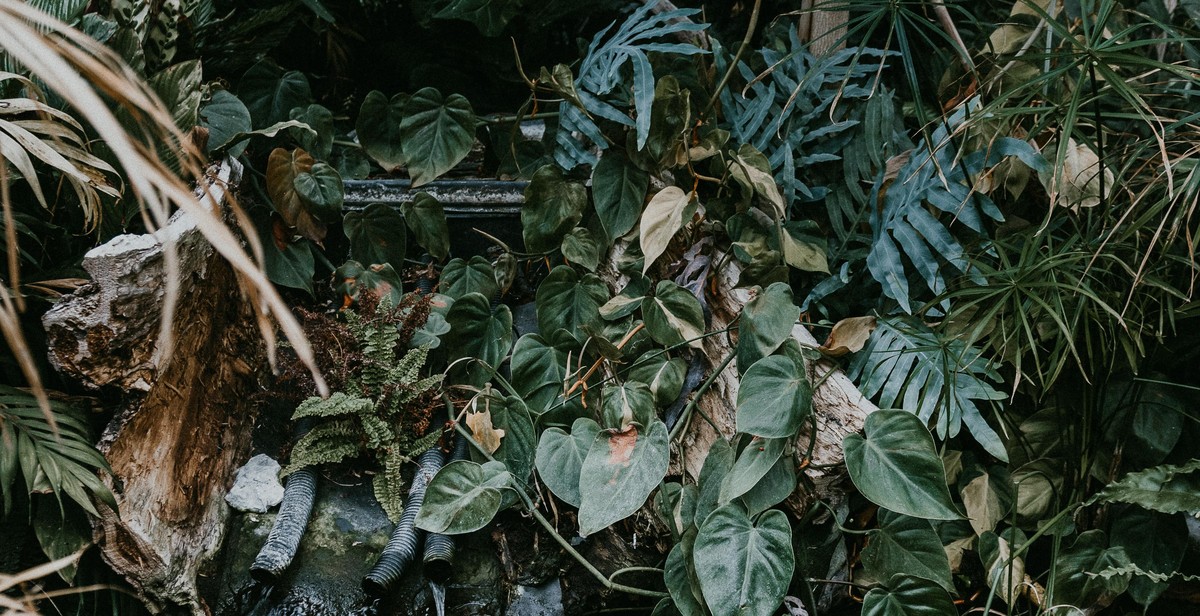How to Build a Raised Pond for Fishkeeping and Aquatic Plants
If you’re interested in fishkeeping or aquatic plants, building a raised pond is a great way to bring the beauty of nature to your backyard. A raised pond is an above-ground water feature that can be customized to fit your specific needs and preferences. In this article, we’ll explore the benefits of raised ponds for fishkeeping and aquatic plants and guide you through the process of building one.
Why Build a Raised Pond?
There are several reasons why you might want to build a raised pond instead of an in-ground one. For one, raised ponds can be easier to maintain since they are at eye level and don’t require you to bend over or get on your hands and knees. They also provide better visibility of your fish and plants, making it easier to enjoy their beauty.
Another reason to build a raised pond is that they can be more accessible for people with disabilities or limited mobility. With a raised pond, you can bring the joy of fishkeeping and aquatic plants to people who may not be able to enjoy them otherwise.
Benefits of Raised Ponds for Fishkeeping and Aquatic Plants
- Customizable size and shape
- Easy to maintain
- Better visibility of fish and plants
- Can be more accessible for people with disabilities or limited mobility
- Can be used as a focal point in your backyard or garden
- Can be designed to fit your specific needs and preferences
In the next section, we’ll go over the materials and tools you’ll need to build a raised pond for fishkeeping and aquatic plants.

Planning and Design
Building a raised pond for fishkeeping and aquatic plants requires careful planning and design to ensure the best possible environment for your aquatic life. Here are some important factors to consider:
Choosing the Right Location
The location of your raised pond is crucial for its success. You want to choose a spot that gets plenty of sunlight but is also shaded for part of the day. Avoid placing your pond under trees as falling leaves and debris can cause issues with water quality. Also, make sure the area is level and has proper drainage to prevent flooding.
Deciding on Size and Shape
The size and shape of your raised pond will depend on your available space and personal preferences. Consider the number and size of fish you plan to keep and the types of aquatic plants you want to grow. A larger pond with a deeper depth will provide a more stable environment for your fish and plants.
Determining the Depth
The depth of your raised pond is important for the health and safety of your aquatic life. A depth of at least 18 inches is recommended to ensure proper oxygen levels and to prevent overheating in warmer weather. However, if you plan to keep koi or larger fish, a depth of 3 feet or more may be necessary.
Selecting the Right Materials
When selecting materials for your raised pond, it is important to choose materials that are safe for your aquatic life and that will last. Cedar and redwood are popular choices for the frame, while liner materials such as EPDM or PVC are commonly used for the interior. Avoid using pressure-treated wood or materials that contain toxic chemicals.
Tools Required for Building
Building a raised pond requires some basic tools, including a saw, drill, level, measuring tape, and hammer. You may also need a shovel or excavator to dig the hole for your pond. It is important to have all necessary tools on hand before beginning construction to ensure a smooth building process.
| Tool | Function |
|---|---|
| Saw | Cutting wood and other materials |
| Drill | Creating pilot holes and attaching hardware |
| Level | Ensuring the frame is level |
| Measuring tape | Measuring and marking dimensions |
| Hammer | Driving nails and attaching hardware |
| Shovel or excavator | Digging the hole for the pond |

Building the Raised Pond
Now that you have prepared the site, it is time to start building your raised pond. Follow these steps to ensure a successful construction process:
Building the Foundation
The foundation of your raised pond is critical to its stability and longevity. Start by marking out the perimeter of your pond using stakes and string. Dig a trench around the perimeter that is at least 6 inches deep and wide enough to accommodate the width of your chosen building material.
Next, fill the trench with a layer of gravel, ensuring that it is level. This will provide a stable base for your pond walls and prevent any shifting or settling over time.
Constructing the Walls
Once the foundation is in place, you can start building the walls of your raised pond. There are several materials you can choose from, including bricks, concrete blocks, wood, or stone. Whichever material you choose, make sure it is suitable for use in a wet environment and can withstand the weight of the water.
Begin by laying the first course of your chosen building material on top of the gravel foundation, using mortar or adhesive to hold it in place. Continue building up the walls, making sure each course is level and plumb. Leave a gap at the top of the walls for the coping stones or capstones.
Adding a Liner
Once the walls are complete, it is time to add a liner to your raised pond. A liner will help to prevent water from seeping through the walls and into the surrounding soil. There are several types of liners to choose from, including PVC, EPDM, and rubber. Measure the dimensions of your pond and purchase a liner that is slightly larger to allow for overhang.
Place the liner into the pond, making sure it is centered and level. Smooth out any wrinkles or folds and trim any excess material from the edges. Use coping stones or capstones to secure the liner in place and create a finished edge.
Installing a Pump and Filter
A pump and filter are essential for maintaining the health of the water in your raised pond. Install a submersible pump at the bottom of the pond and connect it to a filter. The filter will remove debris and keep the water clean and clear.
Filling the Pond with Water
Once the pump and filter are installed, it is time to fill your raised pond with water. Use a garden hose to slowly fill the pond, taking care not to disturb the liner or walls. Once the water level reaches the top of the walls, turn on the pump and filter and let the water circulate for at least 24 hours before adding any fish or aquatic plants.

Adding Fish and Aquatic Plants
Once your raised pond is complete, it’s time to add some life to it. Adding fish and aquatic plants will not only enhance the beauty of your pond but will also create a healthy ecosystem. However, it’s important to choose the right fish and plants for your pond to ensure their survival.
Choosing the Right Fish for Your Pond
The first step in adding fish to your pond is selecting the right species. When choosing fish, consider the size of your pond, the water temperature, and the type of fish that will thrive in your region. Some popular fish species for ponds include koi, goldfish, and catfish. It’s important to avoid overcrowding your pond to prevent stress and disease among the fish.
Additionally, it’s important to introduce your fish gradually to their new environment. This will give them time to acclimate to the water temperature and prevent shock. Start by adding a few fish at a time and monitor their behavior closely.
Selecting Aquatic Plants
Aquatic plants not only add beauty to your pond but also provide oxygen and shelter for fish. When selecting aquatic plants, consider the water depth and lighting conditions of your pond. Some popular aquatic plants for ponds include water lilies, lotus, and water hyacinths. It’s important to choose plants that are native to your region to ensure they will thrive in your pond.
When planting aquatic plants, use a planting basket or container to prevent them from spreading too quickly and taking over your pond. It’s also important to fertilize your plants regularly to promote healthy growth.
Introducing Fish and Plants to the Pond
When introducing fish and plants to your pond, it’s important to do so slowly and gradually. This will allow the fish and plants to adjust to their new environment and prevent shock. Start by adding a few fish at a time and monitor their behavior closely. If you notice any signs of stress or disease, remove the affected fish immediately.
When planting aquatic plants, be sure to follow the instructions for planting depth and spacing. It’s also important to keep an eye on the plants to ensure they are not overcrowding the pond and competing for resources with the fish.
| 1. | Choose fish and plants that are native to your region. |
| 2. | Avoid overcrowding your pond to prevent stress and disease among the fish. |
| 3. | Introduce fish and plants gradually to their new environment. |
| 4. | Use planting baskets or containers to prevent plants from spreading too quickly. |
| 5. | Fertilize your plants regularly to promote healthy growth. |

Maintaining Your Raised Pond
Maintaining the health and beauty of your raised pond requires regular cleaning and maintenance, testing water quality, feeding fish, and caring for plants. Additionally, you will need to take steps to winterize your pond to protect it from the cold weather. Here are some tips for maintaining your raised pond:
Regular Cleaning and Maintenance
It is essential to keep your raised pond clean to prevent the buildup of harmful bacteria and algae. You can use a pond vacuum or net to remove debris and leaves from the water surface. Additionally, you should clean the pond filter regularly to ensure that it is working correctly.
Testing Water Quality
Testing the water quality of your raised pond is crucial to maintaining the health of your fish and plants. You can use a water testing kit to check the pH, ammonia, nitrate, and nitrite levels in the water. If you notice any irregularities, you should take action to correct the problem.
Feeding Fish and Caring for Plants
Feeding your fish and caring for your plants is an essential part of maintaining your raised pond. You should feed your fish regularly and ensure that they are getting the proper nutrition. Additionally, you should trim any dead or dying leaves from your plants to prevent them from decaying in the water.
Winterizing Your Pond
Winterizing your raised pond is crucial to preventing damage from freezing temperatures. You can use a pond heater to keep the water temperature stable during the winter months. Additionally, you should remove any excess debris from the pond, as this can contribute to the buildup of harmful bacteria.
By following these tips, you can maintain the health and beauty of your raised pond for years to come.
